- Resources
- Threat Intelligence
- Risk Management Framework
- Common Language
- Forensics
- Cryptography
- DoD 8570
- Recommended Reading
- Training & Kali Tools
- Security & Privacy
- Passwords
- Research
Cyber Security Resources
- US CERT | Current Activity
- MITRE | Common Vulnerabilities and Exposures (CVE)
- NIST | National Vulnerability Database
- DoD Approved 8570 Baseline Certifications
- TechRepublic | Security
- ZD Net | Zero Day Blog
- Symantec | Security Blog
- Harvard Law School | National Security Journal
- McAfee | Infomration Security Trends
- The Hacker News
- Gibson Research Center (GRC)
What is Cyber Security?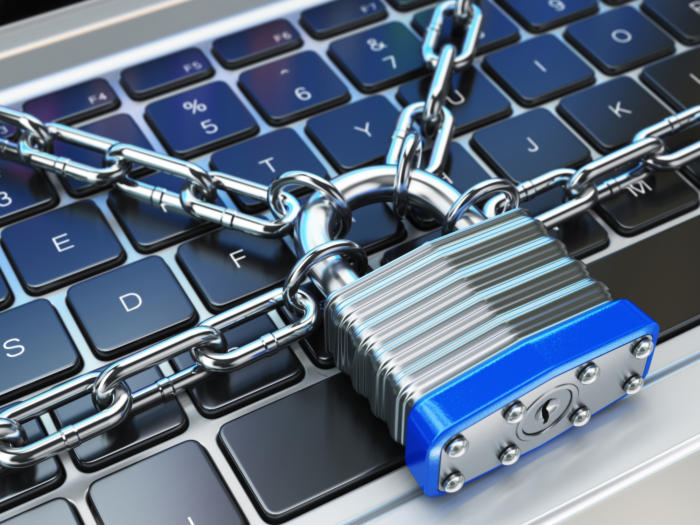
“Cybersecurity” or “Cyberspace security” [is] defined as the “preservation of confidentiality, integrity and availability of information in the Cyberspace”. Source: ISO/IEC 27032:2012 Information technology — Security techniques — Guidelines for cybersecurity
I define cyber security as the protection (preservation of confidentiality, integrity and availability) of information and defense (prevention, detection and response to attacks) of networks and networked systems and software applications.
This is achieved through proper execution of a comprehensive strategy outlined by policies and standards that define authorized and prohibited activities.
According to the U.S. definition:
The process of protecting information by preventing, detecting, and responding to attacks. Source: Draft Strategy for Improving Critical Infrastructure Cybersecurity (2014)
The ability to protect or defend the use of cyberspace from cyber attacks. Source: CNSS Instruction No. 4009 (26 Apr 2010)
1.The activity or process, ability or capability, or state whereby information and communications systems and the information contained therein are protected from and/or defended against damage, unauthorized use or modification, or exploitation.
2. Strategy, policy, and standards regarding the security of and operations in cyberspace, and encompass[ing] the full range of threat reduction, vulnerability reduction, deterrence, international engagement, incident response, resiliency, and recovery policies and activities, including computer network operations, information assurance, law enforcement, diplomacy, military, and intelligence missions as they relate to the security and stability of the global information and communications infrastructure.
The process of protecting information by preventing, detecting, and responding to attacks. Source: National Institute of Standards and Technology. US Department of Homeland Security - Draft Framework for Improving Critical Infrastructure Cybersecurity (2014)
The vulnerability of any computing system, software program, or critical infrastructure, or their ability to resist, intentional interference, compromise, or incapacitation through the misuse of, or by unauthorized means of, the Internet, public or private telecommunications systems.
Cyber Threat Intelligence
Risk Management Framework
Resources
- NIST SP 800-30 Rev 1 Guide for Conducting Risk Assessments
- NIST SP 800-37 Rev 2 Risk Management Framework for Information Systems and Organizations: A System Life Cycle Approach for Security and Privacy
- NIST SP 800-39 Managing Information Security Risk: Organization, Mission, and Information System View
- NIST SP 800-53 Rev 5 Security and Privacy Controls for Information Systems and Organizations (DRAFT)
- NIST SP 800-53A Rev 4 Assessing Security and Privacy Controls in Federal Information Systems and Organizations: Building Effective Assessment Plans
- NIST SP 800-57 Part 1 Rev 4 Recommendation for Key Management, Part 1: General
- NIST SP 800-60 Vol I Rev 1 Guide for Mapping Types of Information and Information Systems to Security Categories
- NIST SP 800-60 Vol II Rev 1 Guide for Mapping Types of Information and Information Systems to Security Categories: Appendices
- NIST SP 800-60 Vol II Rev 1 Volume II: Appendices to Guide for Mapping Types of Information and Information Systems to Security Categories
- NIST SP 800-111 Guide to Storage Encryption Technologies for End User Devices
- NIST SP 800-128 Guide for Security-Focused Configuration Management of Information Systems
- NIST SP 800-160 Vol 1 Systems Security Engineering: Considerations for a Multidisciplinary Approach in the Engineering of Trustworthy Secure Systems
The RMF Process:
- Prepare
- Organizational Level
- Task P-1 - Risk Management Roles
- Task P-2 - Risk Management Strategy
- Task P-3 - Risk Assessment - Organization
- Task P-4 - Organizationally-Tailored Conrol Baselines
- Task P-5 - Common Control Identification
- Task P-6 - Impact-Level Prioritization
- Task P-7 - Continuous Monitoring Strategy
- System Level
- Task P-8 - Mission or Business Focus
- Task P-9 - System Stakeholdersy
- Task P-10 - Asset Identification
- Task P-11 - Authorization Boundary
- Task P-12 - Information Types
- Task P-13 - Information Life Cycle
- Task P-14 - Risk Assessment - System
- Task P-15 - Requirements Definition
- Task P-16 - Enterprise Architecture
- Task P-17 - Requirements Allocation
- Task P-18 - System Registration
- Categorize
- Task C-1 - System Description
- Task C-2 - Security Categorization
- Task C-3 - Security Categorization Review & Approval
- Select
- Task S-1 - Control Selection
- Task S-2 - Control Tailoring
- Task S-3 - Control Allocation
- Task S-4 - Documentation of Planned Control Implementations
- Task S-5 - Continuous monitoring Strategy-System
- Task S-6 - Plan Review and Approval
- Implement
- Task I-1 - Control Implementation
- Task I-2 - Update Control Implementation Information
- Assess
- Task A-1 - Assessor Selection
- Task A-2 - Assessment Plan
- Task A-3 - Control Assessments
- Task A-4 - Assessment Reports
- Task A-5 - Remediation Actions
- Task A-6 - Plan of Action and Milestones
- Authorize
- Task R-1 - Authorization Package
- Task R-2 - Risk Analysis and Determination
- Task R-3 - Risk Response
- Task R-4 - Authorization Decision
- Task R-5 - Authorization Reporting
- Monitor
- Task M-1 - System and Environment Changes
- Task M-2 - Ongoing Assessments
- Task M-3 - Ongoing Risk Response
- Task M-4 - Authorization Package Updates
- Task M-5 - Security and Privacy Reporting
- Task M-6 - Ongoing Authorization
- Task M-7 - System Disposal
Framework Core
The Framework Core provides a set of activities to achieve specific cybersecurity outcomes, and references examples of guidance to achieve those outcomes. The Core is not a checklist of actions to perform. It presents key cybersecurity outcomes identified by industry as helpful in managing cybersecurity risk. The Core comprises four elements: Functions, Categories, Subcategories, and Informative References.
The Functions, Categories [Activities] and Subcategories [Outcomes] are listed below:
| Function | Category [Activities] | Sub-Category [Outcomes] |
|---|---|---|
| IDENTIFY (ID) | Asset Management (ID.AM): The data, personnel, devices, systems, and facilities that enable the organization to achieve business purposes are identified and managed consistent with their relative importance to business objectives and the organization’s risk strategy. | ID.AM-1: Physical devices and systems within the organization are inventoried |
| ID.AM-2: Software platforms and applications within the organization are inventoried | ||
| ID.AM-3: Organizational communication and data flows are mapped | ||
| ID.AM-4: External information systems are catalogued | ||
| ID.AM-5: Resources (e.g., hardware, devices, data, and software) are prioritized based on their classification, criticality, and business value | ||
| ID.AM-6: Cybersecurity roles and responsibilities for the entire workforce and third-party stakeholders (e.g., suppliers, customers, partners) are established | ||
| Business Environment (ID.BE): The organization’s mission, objectives, stakeholders, and activities are understood and prioritized; this information is used to inform cybersecurity roles, responsibilities, and risk management decisions. | ID.BE-1: The organization’s role in the supply chain is identified and communicated | |
| ID.BE-2: The organization’s place in critical infrastructure and its industry sector is identified and communicated | ||
| ID.BE-3: Priorities for organizational mission, objectives, and activities are established and communicated | ||
| ID.BE-4: Dependencies and critical functions for delivery of critical services are established | ||
| ID.BE-5: Resilience requirements to support delivery of critical services are established | ||
| Governance (ID.GV): The policies, procedures, and processes to manage and monitor the organization’s regulatory, legal, risk, environmental, and operational requirements are understood and inform the management of cybersecurity risk. | ID.GV-1: Organizational information security policy is established | |
| ID.GV-2: Information security roles & responsibilities are coordinated and aligned with internal roles and external partners | ||
| ID.GV-3: Legal and regulatory requirements regarding cybersecurity, including privacy and civil liberties obligations, are understood and managed | ||
| ID.GV-4: Governance and risk management processes address cybersecurity risks | ||
| Risk Assessment (ID.RA): The organization understands the cybersecurity risk to organizational operations (including mission, functions, image, or reputation), organizational assets, and individuals. | ID.RA-1: Asset vulnerabilities are identified and documented | |
| ID.RA-2: Threat and vulnerability information is received from information sharing forums and sources | ||
| ID.RA-3: Threats, both internal and external, are identified and documented | ||
| ID.RA-4: Potential business impacts and likelihoods are identified | ||
| ID.RA-5: Threats, vulnerabilities, likelihoods, and impacts are used to determine risk | ||
| ID.RA-6: Risk responses are identified and prioritized | ||
| Risk Management Strategy (ID.RM): The organization’s priorities, constraints, risk tolerances, and assumptions are established and used to support operational risk decisions. | ID.RM-1: Risk management processes are established, managed, and agreed to by organizational stakeholders | |
| ID.RM-2: Organizational risk tolerance is determined and clearly expressed | ||
| ID.RM-3: The organization’s determination of risk tolerance is informed by its role in critical infrastructure and sector specific risk analysis | ||
| PROTECT (PR) | Access Control (PR.AC): Access to assets and associated facilities is limited to authorized users, processes, or devices, and to authorized activities and transactions. | PR.AC-1: Identities and credentials are managed for authorized devices and users |
| PR.AC-2: Physical access to assets is managed and protected | ||
| PR.AC-3: Remote access is managed | ||
| PR.AC-4: Access permissions are managed, incorporating the principles of least privilege and separation of duties | ||
| PR.AC-5: Network integrity is protected, incorporating network segregation where appropriate | ||
| Awareness and Training (PR.AT): The organization’s personnel and partners are provided cybersecurity awareness education and are adequately trained to perform their information security-related duties and responsibilities consistent with related policies, procedures, and agreements. | PR.AT-1: All users are informed and trained | |
| PR.AT-2: Privileged users understand roles & responsibilities | ||
| PR.AT-3: Third-party stakeholders (e.g., suppliers, customers, partners) understand roles & responsibilities | ||
| PR.AT-4: Senior executives understand roles & responsibilities | ||
| PR.AT-5: Physical and information security personnel understand roles & responsibilities | ||
| Data Security (PR.DS): Information and records (data) are managed consistent with the organization’s risk strategy to protect the confidentiality, integrity, and availability of information. | PR.DS-1: Data-at-rest is protected | |
| PR.DS-2: Data-in-transit is protected | ||
| PR.DS-3: Assets are formally managed throughout removal, transfers, and disposition | ||
| PR.DS-4: Adequate capacity to ensure availability is maintained | ||
| PR.DS-5: Protections against data leaks are implemented | ||
| PR.DS-6: Integrity checking mechanisms are used to verify software, firmware, and information integrity | ||
| PR.DS-7: The development and testing environment(s) are separate from the production environment | ||
| Information Protection Processes and Procedures (PR.IP): Security policies (that address purpose, scope, roles, responsibilities, management commitment, and coordination among organizational entities), processes, and procedures are maintained and used to manage protection of information systems and assets. | PR.IP-1: A baseline configuration of information technology/industrial control systems is created and maintained | |
| PR.IP-2: A System Development Life Cycle to manage systems is implemented | ||
| PR.IP-3: Configuration change control processes are in place | ||
| PR.IP-4: Backups of information are conducted, maintained, and tested periodically | ||
| PR.IP-5: Policy and regulations regarding the physical operating environment for organizational assets are met | ||
| PR.IP-6: Data is destroyed according to policy | ||
| PR.IP-7: Protection processes are continuously improved | ||
| PR.IP-8: Effectiveness of protection technologies is shared with appropriate parties | ||
| PR.IP-9: Response plans (Incident Response and Business Continuity) and recovery plans (Incident Recovery and Disaster Recovery) are in place and managed | ||
| PR.IP-10: Response and recovery plans are tested | ||
| PR.IP-11: Cybersecurity is included in human resources practices (e.g., deprovisioning, personnel screening) | ||
| PR.IP-12: A vulnerability management plan is developed and implemented | ||
| Maintenance (PR.MA): Maintenance and repairs of industrial control and information system components is performed consistent with policies and procedures. | PR.MA-1: Maintenance and repair of organizational assets is performed and logged in a timely manner, with approved and controlled tools | |
| PR.MA-2: Remote maintenance of organizational assets is approved, logged, and performed in a manner that prevents unauthorized access | ||
| Protective Technology (PR.PT): Technical security solutions are managed to ensure the security and resilience of systems and assets, consistent with related policies, procedures, and agreements. | PR.PT-1: Audit/log records are determined, documented, implemented, and reviewed in accordance with policy | |
| PR.PT-2: Removable media is protected and its use restricted according to policy | ||
| PR.PT-3: Access to systems and assets is controlled, incorporating the principle of least functionality | ||
| PR.PT-4: Communications and control networks are protected | ||
| DETECT (DE) | Anomalies and Events (DE.AE): Anomalous activity is detected in a timely manner and the potential impact of events is understood. | DE.AE-1: A baseline of network operations and expected data flows for users and systems is established and managed |
| DE.AE-2: Detected events are analyzed to understand attack targets and methods | ||
| DE.AE-3: Event data are aggregated and correlated from multiple sources and sensors | ||
| DE.AE-4: Impact of events is determined | ||
| DE.AE-5: Incident alert thresholds are established | ||
| Security Continuous Monitoring (DE.CM): The information system and assets are monitored at discrete intervals to identify cybersecurity events and verify the effectiveness of protective measures. | DE.CM-1: The network is monitored to detect potential cybersecurity events | |
| DE.CM-2: The physical environment is monitored to detect potential cybersecurity events | ||
| DE.CM-3: Personnel activity is monitored to detect potential cybersecurity events | ||
| DE.CM-4: Malicious code is detected | ||
| DE.CM-5: Unauthorized mobile code is detected | ||
| DE.CM-6: External service provider activity is monitored to detect potential cybersecurity events | ||
| DE.CM-7: Monitoring for unauthorized personnel, connections, devices, and software is performed | ||
| DE.CM-8: Vulnerability scans are performed | ||
| Detection Processes (DE.DP): Detection processes and procedures are maintained and tested to ensure timely and adequate awareness of anomalous events. | DE.DP-1: Roles and responsibilities for detection are well defined to ensure accountability | |
| DE.DP-2: Detection activities comply with all applicable requirements | ||
| DE.DP-3: Detection processes are tested | ||
| DE.DP-4: Event detection information is communicated to appropriate parties | ||
| DE.DP-5: Detection processes are continuously improved | ||
| RESPOND (RS) | Response Planning (RS.RP): Response processes and procedures are executed and maintained, to ensure timely response to detected cybersecurity events. | RS.RP-1: Response plan is executed during or after an event |
| Communications (RS.CO): Response activities are coordinated with internal and external stakeholders, as appropriate, to include external support from law enforcement agencies. | RS.CO-1: Personnel know their roles and order of operations when a response is needed | |
| RS.CO-2: Events are reported consistent with established criteria | ||
| RS.CO-3: Information is shared consistent with response plans | ||
| RS.CO-4: Coordination with stakeholders occurs consistent with response plans | ||
| RS.CO-5: Voluntary information sharing occurs with external stakeholders to achieve broader cybersecurity situational awareness | ||
| Analysis (RS.AN): Analysis is conducted to ensure adequate response and support recovery activities. | RS.AN-1: Notifications from detection systems are investigated | |
| RS.AN-2: The impact of the incident is understood | ||
| RS.AN-3: Forensics are performed | ||
| RS.AN-4: Incidents are categorized consistent with response plans | ||
| Mitigation (RS.MI): Activities are performed to prevent expansion of an event, mitigate its effects, and eradicate the incident. | RS.MI-1: Incidents are contained | |
| RS.MI-2: Incidents are mitigated | ||
| RS.MI-3: Newly identified vulnerabilities are mitigated or documented as accepted risks | ||
| Improvements (RS.IM): Organizational response activities are improved by incorporating lessons learned from current and previous detection/response activities. | RS.IM-1: Response plans incorporate lessons learned | |
| RS.IM-2: Response strategies are updated | ||
| RECOVER (RC) | Recovery Planning (RC.RP): Recovery processes and procedures are executed and maintained to ensure timely restoration of systems or assets affected by cybersecurity events. | RC.RP-1: Recovery plan is executed during or after an event |
| Improvements (RC.IM): Recovery planning and processes are improved by incorporating lessons learned into future activities. | RC.IM-1: Recovery plans incorporate lessons learned | |
| RC.IM-2: Recovery strategies are updated | ||
| Communications (RC.CO): Restoration activities are coordinated with internal and external parties, such as coordinating centers, Internet Service Providers, owners of attacking systems, victims, other CSIRTs, and vendors. | RC.CO-1: Public relations are managed | |
| RC.CO-2: Reputation after an event is repaired | ||
| RC.CO-3: Recovery activities are communicated to internal stakeholders and executive and management teams |
Security Incident Common Language
| <-------------------------Incident-------------------------> | ||||||
| <--------------Attack--------------> | ||||||
| <--Event--> | ||||||
| Attackers | Tool | Vulnerability | Action | Target | Unauthorized Result | Objectives |
- Hackers - attackers who attache computer for challenge, status, or the thrill of obtaining access
- Spies - attackers who attack computers for information to be used for political gain
- Terrorists - attackers who attack computers to cause fear, for political gain
- Corporate raiders - employees (attackers) who attack competitors' computers for financial gain
- Professional criminals - attackers who attack computers for personal financial gain
- Vandals - attackers who attack computers to cause damage
- Voyeurs - attackers who attack computer for the thrill of obtaining sensitive information
- Physical attack - means of physically stealing or damagin a computer, network, its components or its supporting systems
- Information exchange - means of obtaining information either from other attackers or from the people being attacked
- User command - means of expoiting a vulnerablitity by entering commands to a process through direct user input at the process interface
- Script or program - means of exploiting a vulnerability by entering commands to a process thorugh the execution of a file of commands or a program at the process interface
- Autonomous agent - means of exploiting a vulnerability by using a program or program fragment that operates independently from the user
- Toolkit - software package that contains scripts, programs or autonomous agents that expoit vulnerabilities
- Distributed tool - tool that can be distributed to multiple hosts, which then can be coordinated to anonymously perform an attack on the target host simultaneously after some timy delay
- Data tap - means of monitoring the electromagnetic radiation emanating from a computer or network using an external device
- Design vulnerability - vulnerability inherent in the design or specification of hardware or software whereby even a perfect implementation will result in a vulnerability
- Implementation vulnerability - vulnerability resulting from an error made in the software or hardware implementation of a satisfactory design
- Configuration vulnerability - vulnerability resulting from an error in the configuration of a system
- Probe - access a target in order to determine one or more of its characteristics
- Scan - access a set of targets systematically in order ot identify which targets have one or more specific characteristics
- Flood - access a target repeatedly in order to overload the target's capacity
- Authenticate - present an identity to a process and, if required, verify that identity, in order to access a target
- Bypass - avoid a process by using an alternative method to access a target
- Spoof - masquerade by assuming the appearance of a different entity in network communications
- Read - obtain the content of data in a storage device or other data medium
- Copy - reproduce a target leaving the original target unchanged
- Steal - take possession of a target without leaving a copy in the original location
- Modify - change the content or characteristics of a target
- Delete - remove a target or render it irretrievable
- Account - domain of user access on a computer or network that is controlled according to a record of information which contains the user's account name, password, and use restrictions
- Process - program in ixecution, consisting of the executable program, the program's data and stack, its program counter, stack pointer and other registers, and all other information needed to execut the program
- Data - representations of facts, concepts, or instructions in a manner suitable for communication, interpretation, or processing by humans or by automatic means
- Component - one of hte parts that make up a computer or network
- Computer - device that consists of one or more associated components, including processing units and peripheral units, that is controlled by internally stored programs and that can perform substantial computations
- Network - interconnected or interrelated group of hosts computers, switching elements, and interconnecting branches
- Internetwork - network of networks
- Increased access - unauthorized increase in the domain of access on a computer or network
- Disclosure of information - dissemination of information to anyone who is not authorized to access that infomration
- Corruption of information - unauthorized alteration of data on a computer or network
- Denial of service - intentional degradation or blocking of computer or network resources
- Theft of resources - unauthorized use of a computer or network resources
- Challenge, status, thrill -
- Political gain -
- Financial gain -
- Damage -
- Site - organizational level with responsibility for security events
- Site name - portion of the fully qualified domain name that correspons to a site
- Reporting date - first date that the incident was reported to a response team or other agency or individuals collecting data
- Starting date - date of the first known incident activity
- Ending date - date of the last known incident activity
- Number of sites - overall number of sites known to have been reported or otherwise to hve been involved in an incident
- Reporting sites - site names of sites known to have reported an incident
- Other sites - site names of sites known to have been involved in an incident but that did not report the incident
- Indicent number - reference number used to track an incident or identify incident information
- Corrective action - action taken during or after an incident to prevent further attacks, repair damage, or punish offenders
Digital Forensic Tools
- Free Forensic Image Analysis Tools
- The Sleuth Kit - Autopsy for Windows
- Access Data - Forensic Tool Kit for Windows
- SANS - SIFT for Ubuntu
- Linux - dd for Linux
- For Purchase Forensic Image Analysis Tools
- opencase - EnCase Forensic for Windows
- Tools to determine information about YOUR browswer & computer
- Gibson Research Center (GRC) Shields Up! is an Internet security vulnerability profiling service.
- Panopticlick 3.0 can help you determine if your browser safe against tracking.
Cryptography
Here is an Public-key cryptography for beginners or refresher.
Open Source tools for creating RSA keys:
Open Source tools for Certificate Authorities
DoD Approved 8570 Baseline Certifications
View the National Initiative for Cybersecurity Careers and Studies (NICCS) Cyber Career Pathways Tool to explore work roles within the Workfore Framework for Cybersecuirty (NICE Framework).
| Approved Baseline Certifications | |||
|---|---|---|---|
| Level I | Level II | Level III | |
| IAT | A+ CE CCNA Security CND Network+ CE SSCP |
CCNA Security CySA+ GICSP GSEC Security+ CE CND SSCP |
CASP+ CE CCNP Security CISA CISSP (or Associate) GCED GCIH CCSP |
| IAM | CAP CND Cloud+ GSLC Security+ CE HCISPP |
CAP CASP+ CE CISM CISSP (or Associate) GSLC CCISO HCISPP |
CISM CISSP (or Associate) GSLC CCISO |
| IASAE | CASP+ CE CISSP (or Associate) CSSLP |
CASP+ CE CISSP (or Associate) CSSLP |
CISSP-ISSAP CISSP-ISSEP CCSP |
| CSSP Analyst | CSSP Infrastructure Support | CSSP Incident Responder | |
| CEH CFR CCNA Cyber Ops CCNA Security CySA+ GCIA GCIH GICSP Cloud+ SCYBER PenTest+ |
CEH CySA+ GICSP SSCP CHFI CFR Cloud+ CND |
CEH CFR CCNA Cyber Ops CCNA Security CHFI CySA+ GCFA GCIH SCYBER PenTest+ |
|
| CSSP Auditor | CSSP Manager | ||
| CEH CySA+ CISA GSNA CFR PenTest+ |
CISM CISSP-ISSMP CCISO |
||
Recommended Reading
- The Fifth Domain by Richard A. Clarke and Robert K. Knake

- Dawn of the Code War by John P. Carlin and Garrett M. Graff

- Messing with the Enemy by Clint Watts

- The Dark Web by Geoff White and Bernard P. Achampong

- The Perfect Weapon: War, Sabotage, and Fear in the Cyber Age by David Sanger

- The Darkening Web: The War for Cyberspace by Alexander Klimburg

- Facing Cyber Threats Head On by Brian Minick
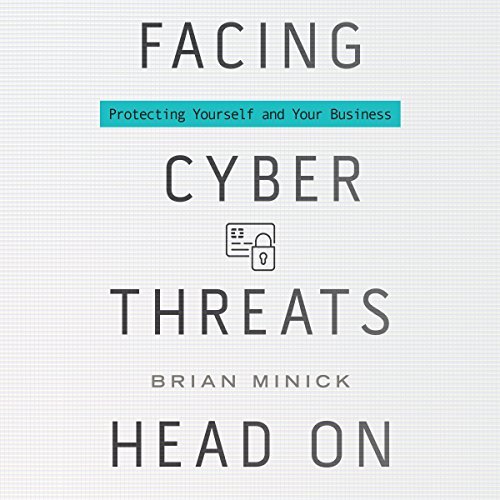
- Virtual Terror by Daniel Wagner
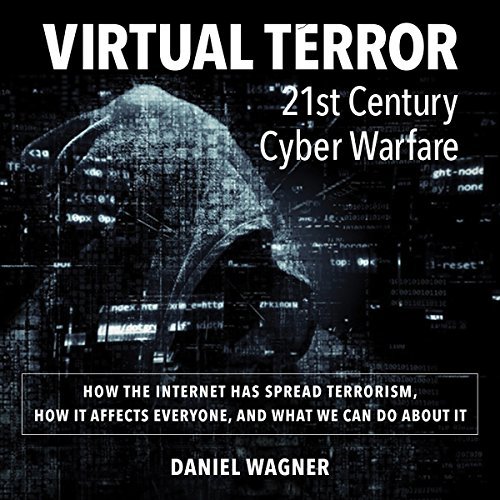
- The Cyber Effect by Mary Aiken, PhD

- Cyber Spies by Gordon Corera

- Countdown to Zero Day by Kim Zetter

- Cyber War by Richard A. Clarke

- America the Vulnerable by Joel Brenner

- Dark Territory by Fred Kaplan
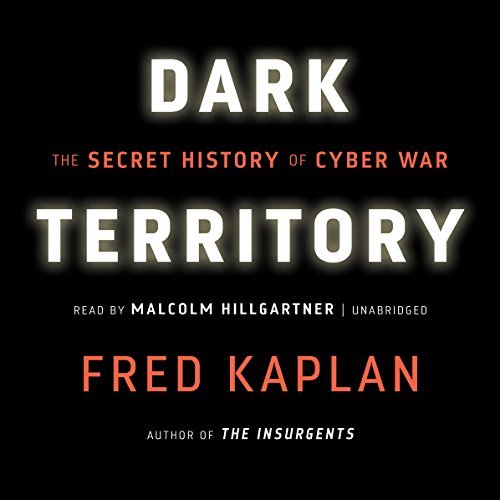
- Cyber Attack by Paul Day

- Serious Cryptography by Jean-Philippe Aumasson
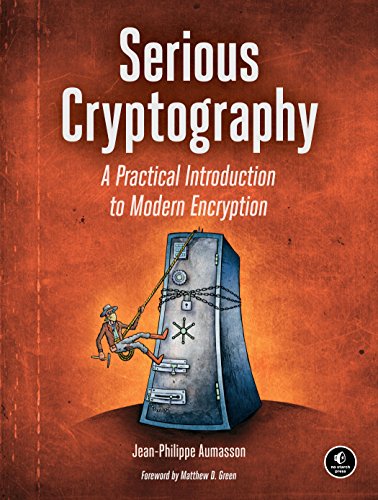
Training and Kali Tools
Cyber Training
Cisco CCNA Cyber Operations

Kali Linux
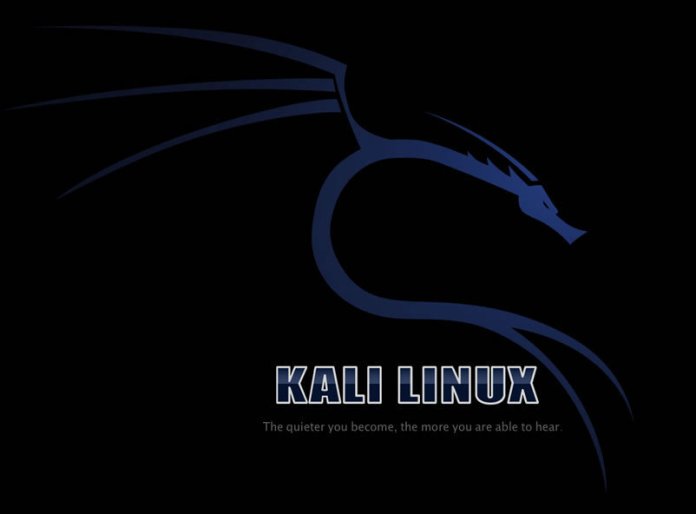
Kali Tools
Security & Privacy
What is the difference between Security and Privacy?
First, what is the definition of Security?
Second, what is the definition of Privacy?
So now, how do these support each other and interact?
Privacy Policies is a for-pay site that can help you build a Privacy Policy (and other policies too).
Passwords and Vaults
This page is under construction.
Research References
Academic Research on
Cyber Security
- A model framework for successful cybersecurity capacity building
- Analysis of Human Factors in Cyber Security
- Attacking cybersecurity from the inside out
- Can a Network Attack Be Simulated in an Emulated Environment for Network Security Training
- Critical success factors for cybersecurity leaders
- Cyber defense triad for where security matters
- Cybersecurity - are you ready
- Cybersecurity - you cannot secure what you cannot see
- Cybersecurity and continuous assurance
- Cybersecurity and encryption for the masses
- Cybersecurity and human rights
- Cybersecurity by the numbers
- Cybersecurity defending the new battlefield
- Cybersecurity gets smart
- Cybersecurity skills - foundational theory and the cornerstone of APTs mitigation
- Cybersecurity's human factor
- Deep learning for Unsupervised Insider Threat Detection in Structured Cybersecurity Data Streams
- Designing user incentives for cybersecurity
- Development of a system for the detection of cyber attacks based on the clustering and formation of reference deviations of attributes
- Fishing for phishers - Improving Internet users sensitivities
- From old to new - assessing cybersecurity risks for an evolving smart grid
- From qualitative to quantitative proofs of security properties using first-order conditional logic
- Guarding against a growing threat
- Human Rights and Cybersecurity Due Diligance - A Comparative Study
- Improving cybersecurity in the european union
- Individual differences in susceptibility to online influence - A theoretical review
- Institutional cybersecurity from military perspective
- Introducing OSSF - a framework for online serice cybersecurity risk management
- Live free or die hard - us-uk cybersecurity policies
- Managing cybersecurity threat
- New model created for cybersecurity risk management
- New York's cybersecurity requirements for DFS licensees
- Opportunities exist for DOD to share cybersecurity resources with small business
- Policy for US cybersecurity
- Press accept to update now Individual differences in susceptibility to
- Priming and warnings are not effective to prevent social engineering
- Study ranks cyber aware countries
- What we talk about when we talk about reasonable cybersecurity
 Cyber Security References
Cyber Security References